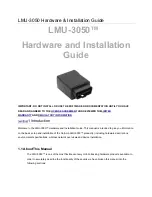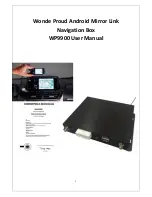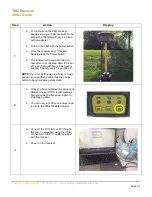
and communication systems or networks, using the Locator cellular or Bluetooth
function is against the law in many countries or prohibited by airline operators.
Remember to power off the locator before boarding the aircraft, please refer to the
USER MANUAL for detail.
Safety in explosive atmospheres
When in an area with a potentially explosive atmosphere or where flammable
materials exist, remember to power off the Locator to reduce the possibility of sparks
which could result in bodily injury or death. Users are strongly advised not to use the
Locator at refuelling points such as service or gas stations, and should observe all
notices and restrictions on the use of radio equipment in fuel depots, chemical plants,
or where blasting operations are in progress.
Exposure to radio frequency (RF) signals
Your MX-LOCare GPS Locator contains a cellular radio and other radios, each
incorporating a transmitter and receiver. When either of these radios is on, they
receive or transmit RF energy. When the device communicates over the cellular
network, the network system controls the power level at which the Locator responds.
When the device communicates with another Bluetooth device, the power level and
communications intervals are tightly controlled by the locator so as not to exceed
regulatory requirements.
The radiated power is far below the internationally established radio frequency
exposure limits. These limits are part of comprehensive guidelines and establish
permitted levels of RF energy for the general population. The guidelines are based on
safety standards previously set by international safety bodies including: American
National Standards Institute (ANSI) IEEE. C95.1-1992; National Council on Radiation
Protection and Measurement (NCRP). The standards include a substantial safety
margin designed to assure the safety of all persons, regardless of age and health.
Your MX-LOCare GPS Locator was designed not to exceed the limits for exposure to
radio frequency waves recommended by international guidelines. These guidelines
were developed by the independent scientific organization (ICNIRP) and include
safety margins designed to assure the protection of all persons regardless of age and
or health.
The guidelines use a unit of measure known as Specific Absorption Rate (SAR). The
SAR limit for your device is 4.OW/Kg@10g when measured at the extremity. The
























